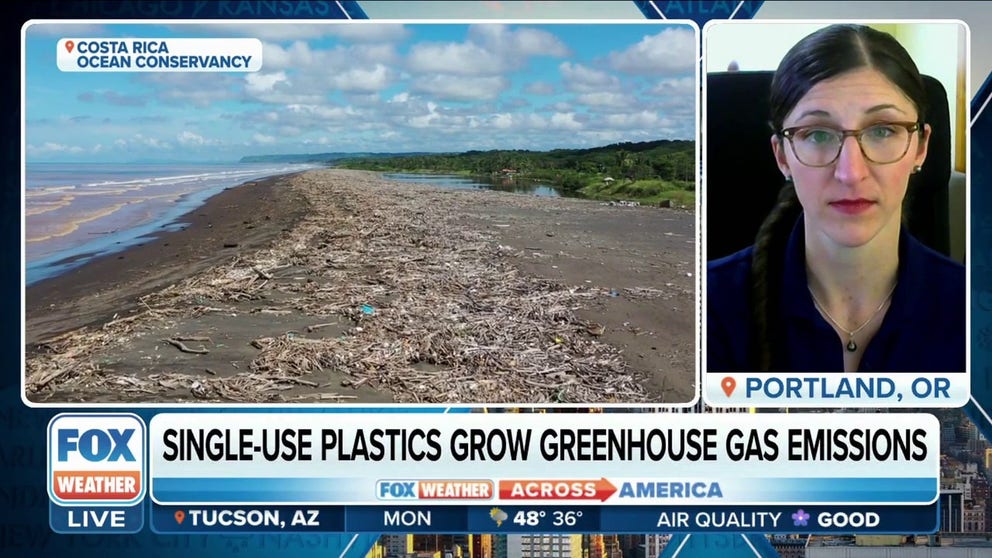More plastic found in some lakes than in ocean ‘garbage patches,’ study finds
Researchers tested samples from 38 lakes and reservoirs on every continent except Antarctica.
FILE: World producing record amount of single-use plastic, report says
U.S. Plastics Policy Analyst at Ocean Conservancy Dr. Anja Brandon said single-use plastics are on the rise and plastic pollution is at an all-time high.
A recent study found that some lakes around the world contain as much, if not more, plastic than polluted ocean gyres, also known as "garbage patches".
Researchers tested samples from 38 lakes and reservoirs on every continent except Antarctica.
"Some of these lakes you think of as clear, beautiful vacation spots, but we discovered such places to be perfect examples of the link between plastics and humans," said Ted Harris, associate research professor for the Kansas Biological Survey & Center for Ecological Research at the University of Kansas and one of the researchers in the study.

FILE: Plastic water bottle floating in water.
(Citizen of the Planet/Education Images/Universal Images Group / Getty Images)
Plastics were found in all the lakes and reservoirs the researchers studied and in a range of concentrations.
They found that two types of lakes are particularly vulnerable to plastic contamination. One type involved those in densely populated and urbanized areas, and the other type were large lakes and reservoirs with elevated deposition areas, long water retention times and high levels of human influence.
UN OFFERS ‘ROADMAP’ TO REDUCING PLASTIC POLLUTION BY 80% BY 2040
According to the study, the most polluted lakes had concentrations of plastic that were as high, if not higher than, concentrations reported in ocean garbage patches. Garbage patches are large, polluted spots in the ocean where rotating ocean currents bring trash and other debris into one location.
One type of plastic found in the freshwater samples stood out for researchers: microplastics, or pieces of plastic that are smaller than 5 mm (0.2 inches) long. They come from a number of sources, ranging from larger pieces of plastic that degrade over time to tiny fibers in clothing.

A small piece of plastic balanced on a fingertip.
(NOAA / NOAA)
"The biggest takeaway from our study is that microplastics can be found in all lakes," said Rebecca Kessler, who worked with Harris to test two Kansas lakes and one reservoir. "Obviously, there are different concentrations, but they are literally everywhere."
According to Kessler, the biggest contributing factor to these microplastics is human interaction with the lakes.
The project was designed and coordinated by the Inland Water Ecology and Management research group of the University of Milano-Bicocca in Italy, involving 79 researchers belonging to the Global Lake Ecological Observatory Network.
